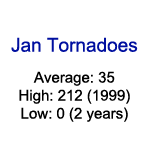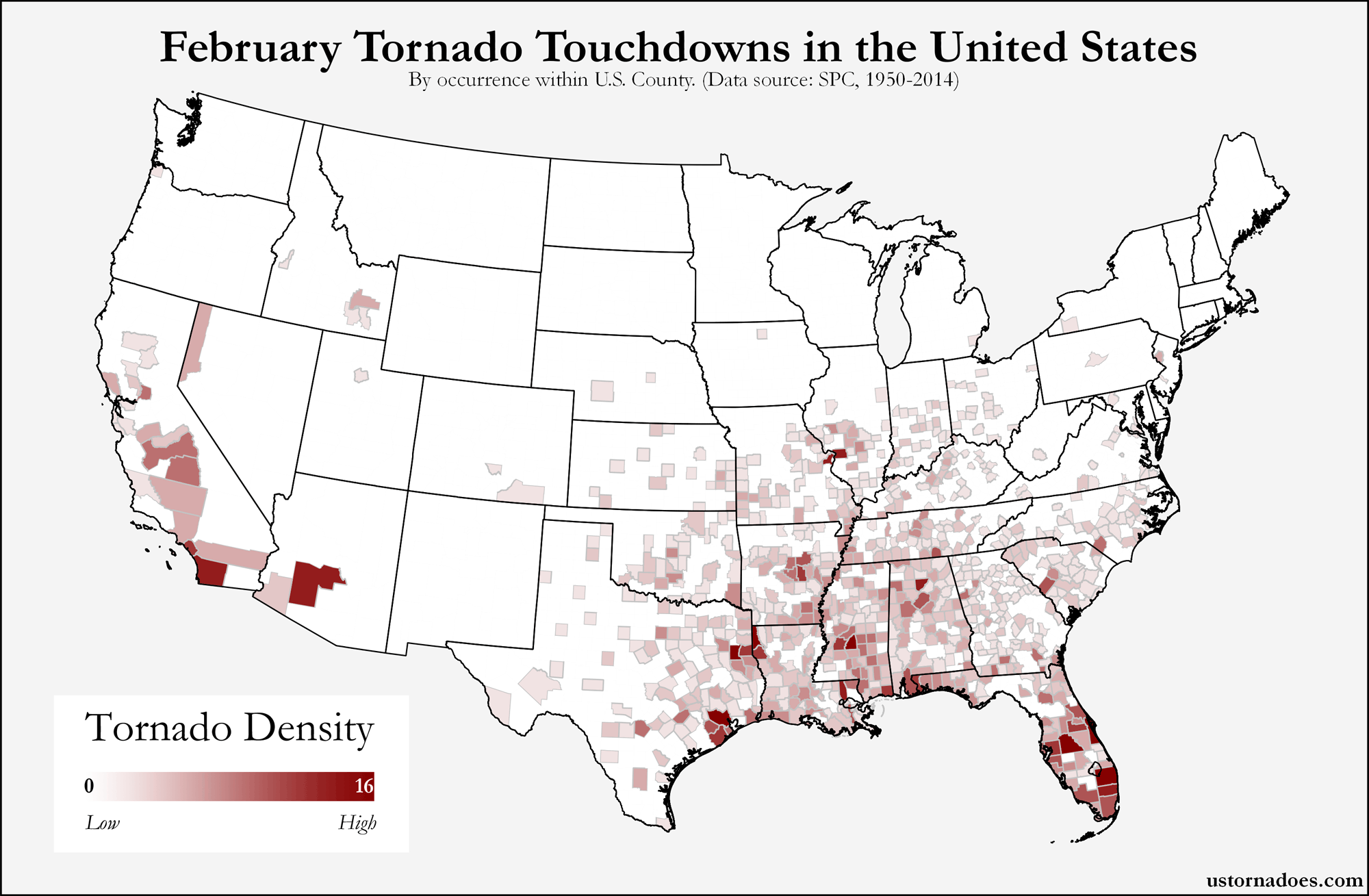The first violent tornado (F/EF4+) of 2019 occurred March 3 in southeast Alabama near the Georgia border. With at least 23 killed, it’s the deadliest tornado since the Moore EF5 in 2013. This more than doubled the entire 2018 tornado death count on its own.
2018 was an oddball, though. It was the first year in the modern record with no verified violent tornadoes in the United States. More than likely the low death toll was heavily influenced by the lack of violent twisters.
Lack of violent tornadoes is a good thing as they tend to be ruthless killers. These events make up a tiny fraction of all tornadoes, but they cause a majority of the deaths.
The end of an almost 2-year long violent tornado drought got me thinking that it’s been a while since we addressed them in any depth here.
First and last dates
Before someone says there is no violent tornado season, it is true that they can and do happen every month of the calendar year. It is also true they aren’t that common in winter.
March certainly isn’t unheard of for a violent tornado. The recent one in Alabama is still on the early side compared to average.
In modern history (1950-2018), about 10 percent of all violent tornadoes have happened in March. It’s the fourth most likely month for them. The usual suspects of April (30 percent), May (24 percent), and June (15 percent) fill out the top spots.
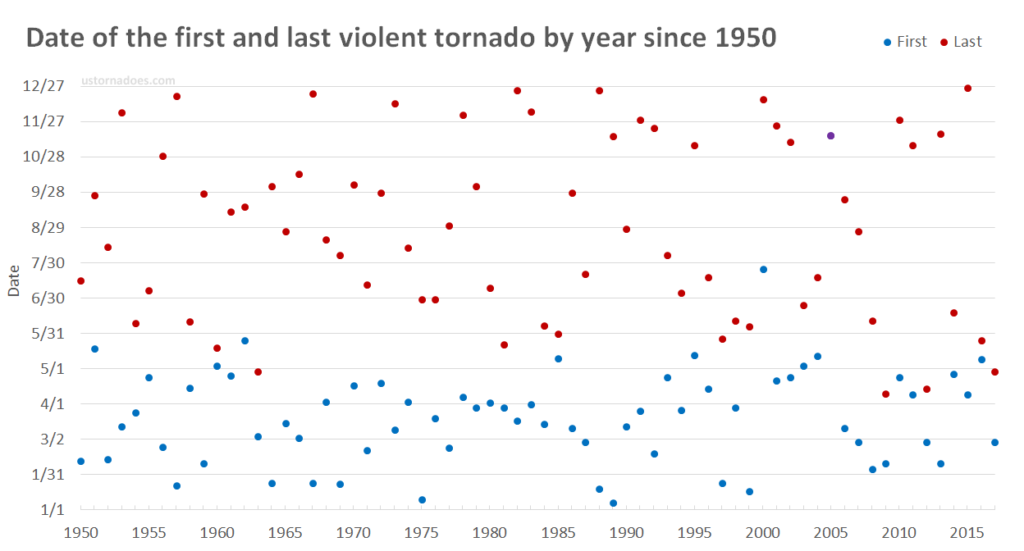
For the full modern record, the average for the first violent tornado of the year is March 23. The average for the last is August 29.
You can shift those dates around a bit based on what your averaging period is. Rather than note them all, the other possibly worth pointing out is the 1995 to now average. This more or less covers the Doppler radar era, and it has a first of April 9 and a last of August 17 on average.
Medians for the full period are quite similar at March 25 and August 28. That’s April 11 and August 6 for the Doppler era. Although August features prominently here, a final violent tornado in August is pretty unusual in recent years, as they tend to either come before that or during “second season” in the fall.
Season length
These days, your typical violent tornado season is a bit less than 5 months long, or about a week to two less than 150 days.
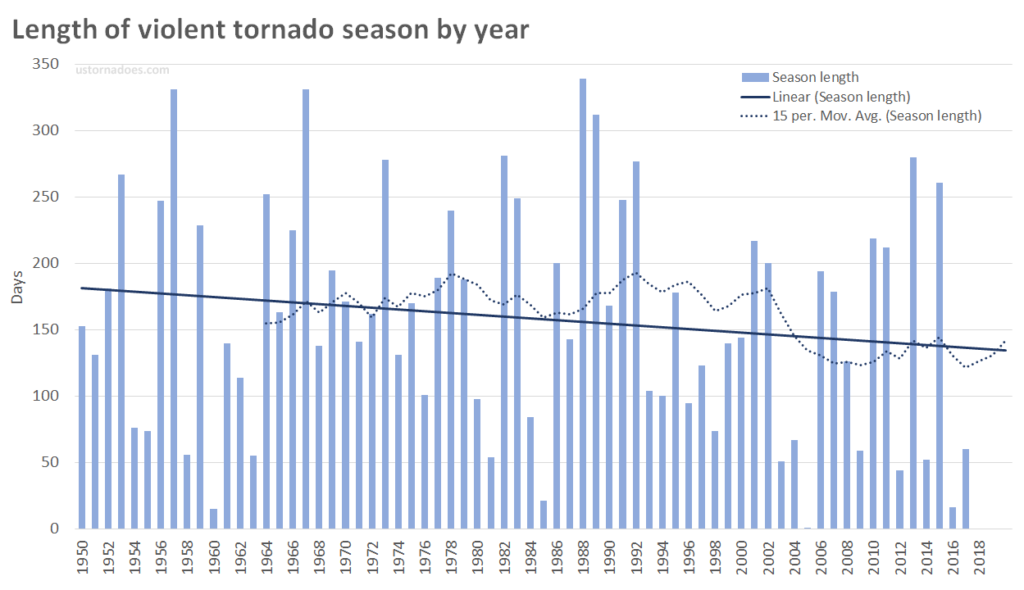
Simple trend lines seem to show a decrease in violent tornado season in recent times as well. How much of this is real versus different rating techniques (rules are tighter and methods more stringent today) is certainly up for debate.
There seems to be similar trends in violent tornado numbers by year, but again it’s hard to make a one-to-one comparison. The lack of them in 2018 was notable, especially given the last several years have had relatively few overall.
Favored places for the first and last
When it comes to where the first violent tornado of the year tends to occur, Mississippi leads the way historically with nine occurrences. Missouri (8), Oklahoma (7), Texas (7), and Kansas (6) round out the top five.
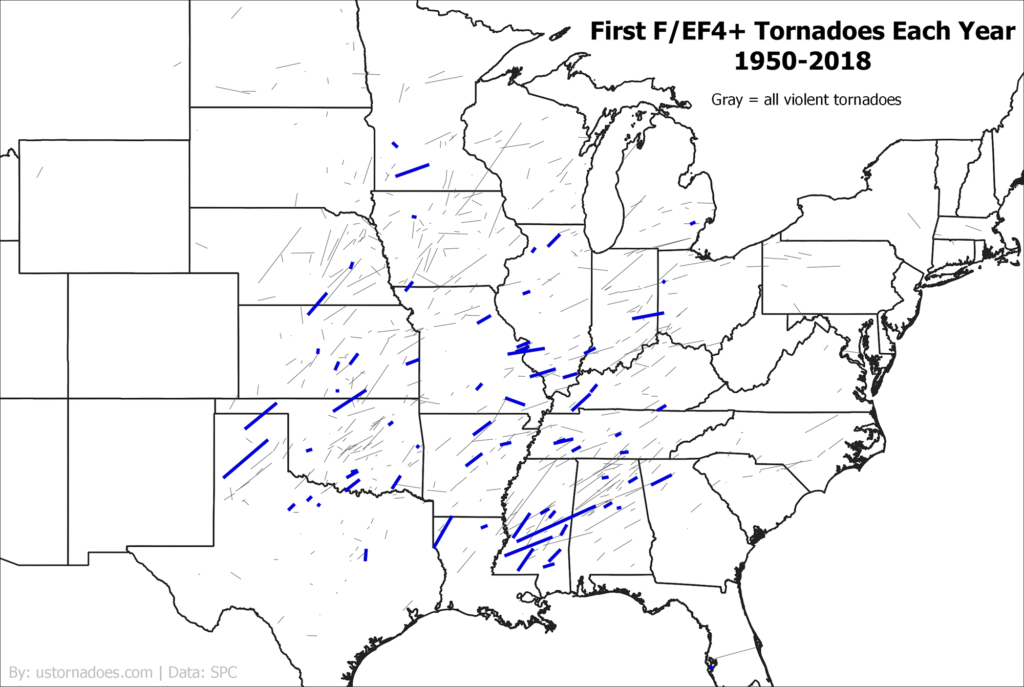
Before this year, Alabama was eighth on this tally with four instances of the first violent tornado of the year. This in mind, Alabama runs neck-and-neck with Oklahoma when it comes to the most killer violent tornadoes on record. Both have seen more than 40 such events since 1950.
On the flip side of the season, the final violent tornado of the year has struck Iowa more than any other state, six times. The top five here also includes Kansas (5), Texas (5), Wisconsin (5), and Illinois (4). Four other states also have four: La., Mo., Miss., and N.D.
Given a long-term average of nine violent tornadoes per year and a Doppler era average of seven, there could unfortunately still be many to come in 2019.
Latest posts by Ian Livingston (see all)
- Busy March for twisters to end with another multi-day event - March 28, 2025
- Everything but locusts: NWS shines in apocalyptic weather - March 17, 2025
- Top tornado videos of 2023 - January 1, 2024
